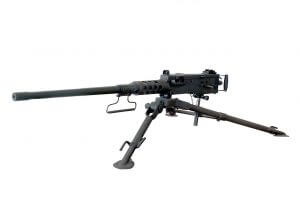Another Tragedy Calls for Simplistic Solutions
The tragic Parkland Florida school shooting has again thrust the national debate about gun violence into the forefront. The immediate calls for “something has to be done,” bring out the usual activists who argue for solutions as radical and illegal as a total ban on all weapons to bans on certain classes of weapons.
We all deeply feel the pain and suffering such an event causes in the lives of the victims, their families, the local community, and our national community. The tragedy is ours as a nation and it is natural to cry out for a solution. End the killing, end war, end poverty, end suffering.
But it is out of the emotion for immediate solutions that the calls for ill conceived, simplistic solutions gain a lot of publicity. Accompanying the publicity is the use of inflammatory rhetoric such as calling the AR-15 type rifle a weapon of mass destruction, a weapon of war, a fully automatic firearm, an assault rifle, among other inaccurate and emotionally loaded terms. Wasting time attacking the weapon detracts from paying attention to real solutions.
Just to set the record straight without arguing about who misuses these terms:
- Weapons of mass destruction are nuclear weapons and certain chemical weapons capable of killing thousands of people in a single deployment. Is a Massive Ordnance Air Blast (MOAB) a weapon of mass destruction? It is 10 times smaller than a small nuclear device. The one dropped in Afghanistan killed about 100 ISIS fighters.
- Weapons of War may include anything from knives, swords, firearms, bombs, missiles, ships, aircraft – you get the idea.

Browning Machine Gun
- Fully automatic firearms are machine guns with extremely high rates of fire such as the venerable .50 caliber Browning M2 heavy machine gun. (Venerable to warriors whose lives it saved)
- Assault rifles – The Germans are credited with developing the “Sturmgewehr”, a storm weapon, that has the general appearance of its assault rifle successors. It is a selective fire weapon with a switch that allows fully automatic fire. Other firearms that qualify for this title include the M16 (U.S.), and the AK-47 (Russia, China, North Korea). AR-15 type semiautomatics have an appearance similar to an assault rifle and are indeed dangerous when mishandled, but they are not assault rifles and cannot be made into one unless re-manufactured, which is already illegal.

Sturmgewehr 44
Assault rifle legislation deals not with real assault rifles but their civilian semiautomatic look-alike versions. Real assault rifles, machine guns and destructive devices are legal under federal law if certain tax and registration provisions are observed. State laws vary. The taxes are high, the cost to purchase one is high, and availability is limited. People who own them in the United States are responsible collectors.
Our founding fathers were wise men who endowed us with a system of governance that assures our liberty to the extent that we are willing to preserve it. They may have imagined the demise of black powder, muzzle loading rifles, and cannons, and their replacement by better technology. Absent any clear idea of what would constitute “arms” in the future, they settled for just saying “keep and bear arms.” This phrase was in keeping with the precedent of the 1689 English Bill of Rights, which provided that Protestants could bear arms for their own defense.
Sir William Blackstone wrote in the 18th century of the “natural right of resistance and self-preservation, when the sanctions of society and laws are found insufficient to restrain the violence of oppression.”
Their point in guaranteeing our right to bear arms was to reduce the chance that government would run roughshod over our natural right of self-defense as the English had done to the colonists. Additionally people have a right to defend their life and liberty when others in society may oppress them. Weapons in a civil society are for defense and not oppression, as is seen in gang violence and other criminal activities. Police are seldom and often never available within seconds of needing them to help us defend ourselves. Read HERE about our Inalienable Right to Self-Defense.
Just as with the historical changes in arms for self-defense, the founders undoubtedly had no way to foresee the demise of print media and the ascendancy of the Internet, yet they had the wisdom to codify the First Amendment to the Constitution outlawing government interference in our social interactions: religion, freedom of speech and the press, freedom of assembly, and right to petition for redress of grievances. The Internet is the new press, home of real journalism as well as lies, deceit, identity theft, and fiction, not totally unlike the old press.
Despite these constitutional guarantees., there are forces that try to dismantle our freedoms. Some call for the elimination of the Second Amendment, which would require a Constitutional Amendment. Who are these evil people intent on dismantling the Constitution?
Is this Left versus Right and/or the Paradox of Tolerance at Work?
So-called activists, possibly paid for by outside actors, call for violence against conservative speakers at universities. They ostensibly do so because they believe the speakers to be intolerant, and feel a duty to oppose (be intolerant of ) intolerance.
So much for freedom of speech and assembly. It was not the government that interfered with those speakers, but the University and its police who refused to ensure their safety and were accordingly complicit in the denial of the speaker’s rights by a potentially violent leftist mob. Is it the duty of governments or police to deny freedom of speech that some view as hate speech? Europeans think so and have outlawed hate speech. Facebook and Twitter face huge fines for permitting hate speech on their sites. Yet the U.S. Constitution protects such speech, however distasteful.
Karl Popper taught that intolerance should not be tolerated, and if tolerance allowed intolerance to succeed completely, tolerance itself would be threatened. This is the Paradox of Tolerance.
As defined by Dictionary.com, tolerance is a “fair, objective, and permissive attitude toward those whose opinions, practices, race, religion, nationality, etc., differ from one’s own; freedom from bigotry.”
Dictionary.com defines toleration as “an act or instance of tolerating, esp. of what is not actually approved; forbearance.” In other words toleration is: “I will put up with your BS and won’t kill you but I really don’t like you very much.”
It is commonly believed that the political left calls for restrictions or bans on speech they view as intolerant, while the right exhibits a high degree of toleration , not because of any moral imperative but because of their conservative belief that freedom of religion, speech, press, assembly, etc. are part of a contract we all live under. The right’s toleration extends to those with whom they disagree on moral or religious grounds because the law often says they must. Accordingly the right (conservatives) also believe in the strictly constructionist view of the 2nd Amendment. These common belief are being borne out by research.
The left will disagree with the right’s assertion that it is they, the left, who are intolerant because the left have come to believe that those on the right are the intolerant bigots who must be silenced. It is the left that mock religious people on the right as clinging to their guns and their bibles. Something has changed in our society. The angry left have abandoned their historical tolerance,and have weaponized it to gain political advantage. These are not evil people, just very conformist group-think people who are not accustomed or trained to think critically.
The Universities are full of professors, children of the 1960’s, whose progressive/liberal attitudes spill over onto their naive students. In a way it is the young embracing Marxism and revolution, and when they grow old they abandon their zeal, get a job, and mellow out a bit. They join the great middle where ideology does not hold sway. Politically they identify as independent and vote 50% left while the other 50% vote right because in the U.S. there are really only two choices.
Those who call for restrictive legislation do not understand the heavy burden of passing legislation that contravenes the Constitution. Such legislation would be subject to the strict scrutiny test which says that the legislation must be narrowly tailored to achieve a compelling state interest and that there is no less restrictive way to achieve the same goal. Precedent and recent history of gun rights legislation is not on the side of those who would restrict freedom, whether the first amendment, the second amendment or any of our other codified rights. Their loud voices are “full of sound and fury, signifying nothing.”
Argument or Appeal to Authority
Appeal to Authority is a fallacy of logic that claims support for a certain idea or proposition because some presumed authority says it is valid. Such are those who call for a ban on weapons because Australia did it, or Brazil did it, or that Canada is doing it incrementally, and much of Europe has done it.
After years of eroding the right to keep and bear arms in other nations, only Guatemala, Mexico, and the United States still have constitutional guarantees of self-defense. Nevertheless, the constitutions of Mexico and Guatemala place restrictions on that right that render it of questionable value except in the home.
So, the United States is unique in the world as a nation that guarantees its citizens the right of self-defense by force of arms, not only at home, or in a business, but wherever a citizen may be. The sophomoric argument that we should do something because everybody else is doing it is not only logically untenable but flies in the face of our culture of freedom.
Culture
It is obvious that culture plays a dominant role in questions of suicide and homicide. Firearms are part of our culture but not necessarily the dominant factor in firearm deaths. School shootings, the young people perpetrating the crime, the role of social media, drug treatment of perceived behavioral aberrations, defense of schools, and parental supervision of youth all play potentially more important roles in the problem than the firearm itself. It is refreshing that such questions are being raised.
The United States is a multicultural nation in a broader sense than just people immigrating and bringing in another culture. We have had significant regional differences for many years and the regional/rural/city divide seems to be increasing. Solutions to firearms violence that would work well for one jurisdiction may not work for another. For example, it has been suggested that teachers could be trained and armed to defend their students. It takes little imagination to predict how such a suggestion would be received in San Francisco, CA versus Dallas, TX.
Calls for Gun Control
To persons familiar with firearms, gun control means controlling where a weapon is pointed. They are inherently dangerous and should be handled by mature adults who are not prohibited from possession, such as by a felony conviction.
The Second Amendment to the Constitution is a fully incorporated proscription on the federal and state governments from infringing our right to keep and bear arms. It will be defended in court by faithful patriots until such time as the Supreme Court becomes corrupted by politics. What is the recourse for a civilized nation if that happens. Look to Brazil for an answer. There is little recourse but to sink into lawlessness.
Some will argue that Australia successfully confiscated all the firearms. That is not 100% true. The Aussies share a lot of cultural traits with us. They gave up a few unwanted weapons in a big propaganda move by the coalition government of the Liberal PM John Howard. Now many years later, the Australian states have weakened the gun laws since the National Firearms Agreement was passed in 1996. They proudly point out that suicides by firearms are down. Now they just hang themselves instead and the rates are going up to alarming heights. Look it up HERE.
The purpose of keeping arms, whether for self-defense or sporting purposes has no bearing on the inherent right.
Gun laws in the United States have evolved into a system that balances the needs of all citizens. Calls to disrupt the system such as banning certain types of weapons or universal registration are knee jerk solutions proposed by people who do not understand the need to preserve the whole Constitution.
The AR-15 is a useful self-defense weapon. It is not an assault rifle and it is certainly not a weapon of mass destruction as Chris Wallace recently characterized it on Fox News Sunday.
The term “Gun Control” itself is charged with meaning. To those who advocate for personal freedom with the attendant required personal responsibility, gun control means “somebody wants to confiscate my gun(s).” If they don’t want to confiscate it, at the very least they want to make it difficult or expensive to obtain a weapon and ammunition. Seattle WA has a tax on firearms and ammunition that has achieved nothing except driving sporting goods dealers out of the city.
Other Suggestions to Eliminate School Shootings
All untested ideas usually come with unintended consequences. To institute a program on a national level is to impose the unintended consequence on everybody. Fortunately, our federal form of government allows states and municipalities to experiment with solutions consistent with Constitutional principles. If a state or city makes a blunder, it is far easier to remedy it. Successes can be shared.
Here are a few ideas that are being tried. Some of them are now standard in many districts:
- Extreme Risk Protection Order (EPRO) – By February 2018, California, Connecticut, Indiana, Oregon, and Washington State have enacted legislation promoted by the Brady Center to Prevent Gun Violence. The emphasis is on preventing suicides but after the recent school shootings, the laws are being promoted as a way to keep weapons away from dangerous people. They stress the temporary nature of the order but judging from the court filings required by the State of Washington to restore a person’s rights, it may be a challenge to regain rights once they have been denied by the court. (RCW 7.94.080 – Termination and renewal of orders.)
- Professional Armed Guards in Schools – Evidence from schools where police or professional armed guards are on duty suggests a deterrent effect on school violence. Opposition to armed guards comes from citizens who question the cost, as well as political opposition when the NRA suggests armed guards. Marjory Stoneman Douglas School in Parkland and every other school in the district have school resource officers, real on-the-job law enforcement agents but they are spread thin in large schools. Police in the schools have resulted in violations of students’ 4th and 5th Amendments rights. (search and seizure, due process) Despite these objections, if a school district can afford well trained resource offices, the more the better. Problems of zero tolerance for minor infractions can be handled in more enlightened ways.
- Armed and Trained Teachers, or other Volunteers – This is easier said than done. Questions about training and liability require serious consideration by government. It might work best out in the country where risk is already extremely low. How about New York City?
- School Uniforms and ID Badges – Increased discipline seems to work well in private schools. Public schools are not as amenable to dress codes, uniforms, and other regimentation. Cost is a factor.
- Closed Circuit TV (security) cameras – Assuming somebody is paying attention to the cameras, such equipment can increase surveillance over a much wider area and is cost effective. Motion alarms sound at the observation post when motion is detected in areas that are off limits. Fences and other barriers keep students, personnel, and visitors in established security channels. The person monitoring the cameras need not be a trained security person but can quickly call security when something suspicious shows up. Cameras in class rooms can give security personnel a quick view of a situation when a teacher calls for help.
As tragic as school shootings are, they are not the biggest threat to young people going to school. Since 2003, there have been 1,353 people killed in school-transportation-related crashes including 119 school-age pedestrians, a majority of which were struck by school buses.




Community Discussion
Be respectful, but please speak your mind! We want a healthy discussion. There are no right or wrong answers here.